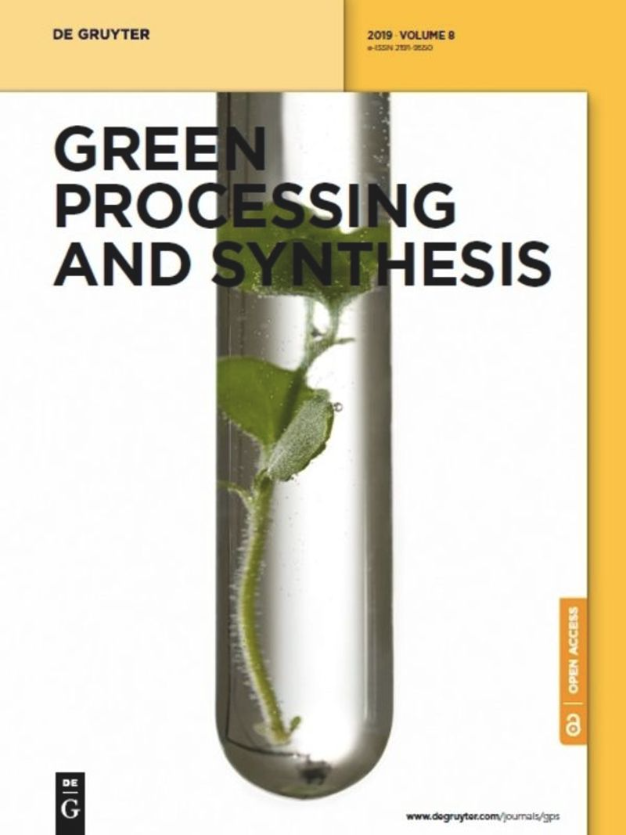氯吡虫啉丙炔纳米颗粒的合成、表征及对小麦杂草控制、生长和产量的影响
IF 3
4区 工程技术
Q2 CHEMISTRY, MULTIDISCIPLINARY
引用次数: 0
摘要
摘要纳米除草剂是利用纳米技术的前景,利用纳米材料为基础的除草剂组合有效地传递化学和生物除草剂。利用x射线衍射和红外光谱对纳米颗粒进行了表征。在目标杂草的第3 ~第4叶期施用纳米除草剂。使用了六种不同的剂量。在标准除草剂推荐剂量下,壳聚糖基纳米除草剂的致死率和视觉损伤均达到100%。低5倍剂量对杂草密度、小麦最高产量及相关参数有显著影响。对于相同的性状,纳米除草剂在低10倍商业除草剂剂量下显示出与建议剂量相当的影响。两种除草剂的粒径均在35 ~ 65 nm之间。结果表明,氯硝磷-丙炔基纳米除草剂在锐钛矿相(176)面2 θ处29.83°处有一个强烈的峰,而芬诺沙普- P -乙基纳米除草剂在锐钛矿相(74)面2 θ处30.55°处有一个强烈的峰。芬诺沙丙- P -乙基的FT-IR光谱清楚地表明,其主要官能团位于610 ~ 1840 cm−1之间,而氯硝丙基的主要官能团位于640 ~ 1740 cm−1之间。纳米除草剂可以通过提高稳定性和降低毒性来恢复传统除草剂的药效。本文章由计算机程序翻译,如有差异,请以英文原文为准。
Synthesis, characterization, and evaluation of nanoparticles of clodinofop propargyl and fenoxaprop-P-ethyl on weed control, growth, and yield of wheat (Triticum aestivum L.)
Abstract Nanoherbicides are articulated by exploiting the prospective of nanotechnology for effectively delivering chemical and biological herbicides using nanomaterial‐based herbicide combinations. The nanoparticles were characterized using X-ray diffraction and FT-IR. On the targeted weeds, the nanoherbicides were sprayed at the third to fourth leaf stage. Six different doses were applied. The mortality and visual injury caused by both chitosan-based nanoherbicides reached 100% at the recommended dose of standard herbicide. The 5-fold lower dose exhibited weed density and maximum wheat yield and related parameters. For the same traits, the nanoherbicide at 10-fold lower dose of commercial herbicides showed a comparable influence as the suggested dose. The size of both herbicides was found to be 35–65 nm. It was observed that the clodinofop-propargyl nanoherbicide has an intense peak appearing at a 2 θ value of 29.83°, corresponding to the (176) plane of the anatase phase and NPs of fenoxaprop- P -ethyl showed an intense peak around the 2 θ value of 30.55° corresponding to the (74) plane of the anatase phase. The FT-IR spectra of fenoxaprop- P -ethyl clearly showed that the major functional groups were located in the FT-IR region between 610 and 1,840 cm −1 and the major functional ones of clodinofop propargyl were located in the FT-IR region between 640 and 1,740 cm −1 . Nanoherbicides could restore the efficacy of conventional herbicides by improving stability and reducing toxicity.
求助全文
通过发布文献求助,成功后即可免费获取论文全文。
去求助
来源期刊

Green Processing and Synthesis
CHEMISTRY, MULTIDISCIPLINARY-ENGINEERING, CHEMICAL
CiteScore
6.70
自引率
9.30%
发文量
78
审稿时长
7 weeks
期刊介绍:
Green Processing and Synthesis is a bimonthly, peer-reviewed journal that provides up-to-date research both on fundamental as well as applied aspects of innovative green process development and chemical synthesis, giving an appropriate share to industrial views. The contributions are cutting edge, high-impact, authoritative, and provide both pros and cons of potential technologies. Green Processing and Synthesis provides a platform for scientists and engineers, especially chemists and chemical engineers, but is also open for interdisciplinary research from other areas such as physics, materials science, or catalysis.
 求助内容:
求助内容: 应助结果提醒方式:
应助结果提醒方式:


